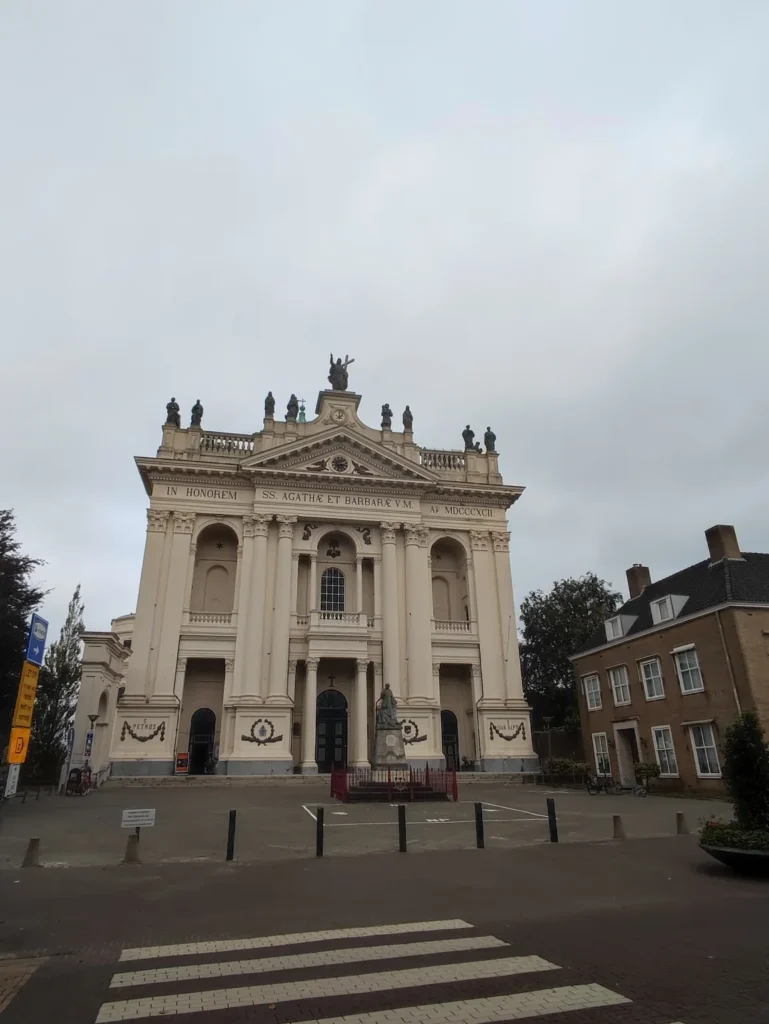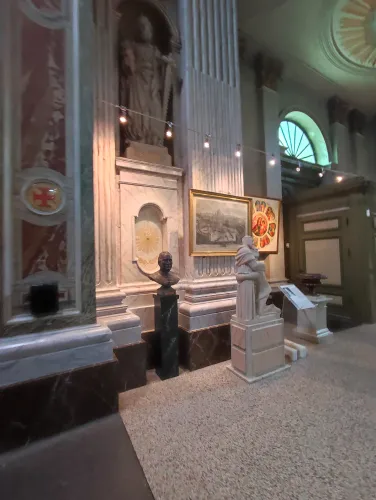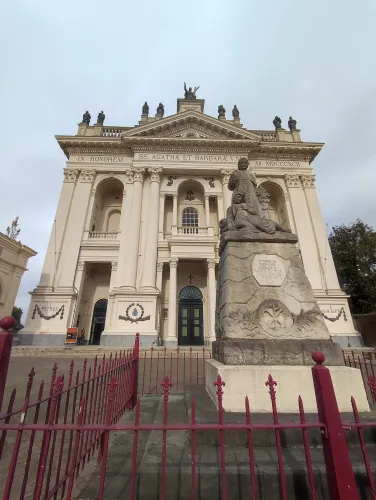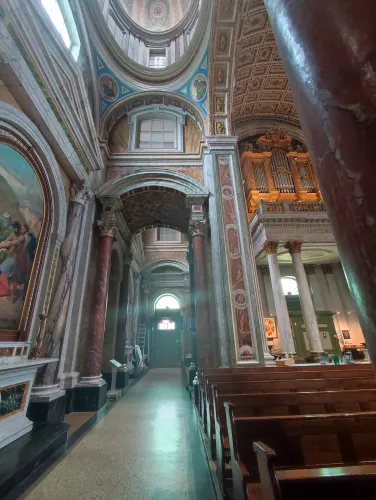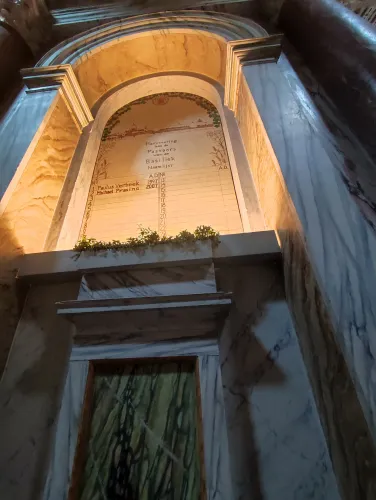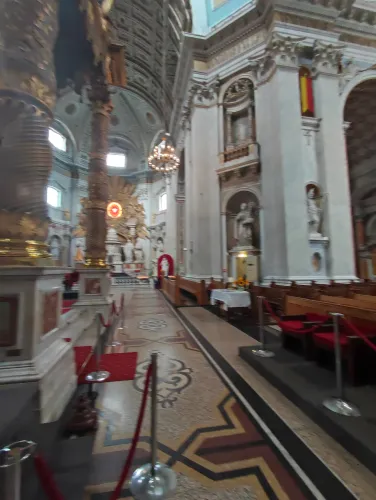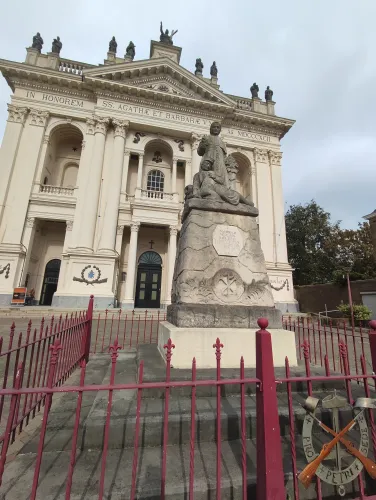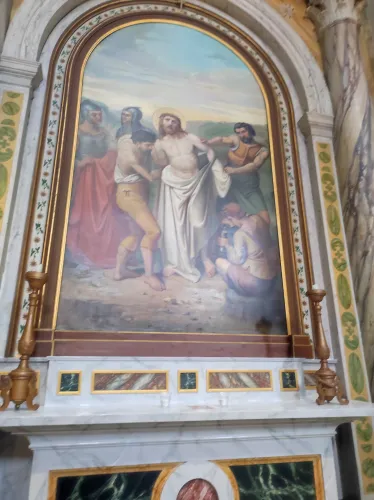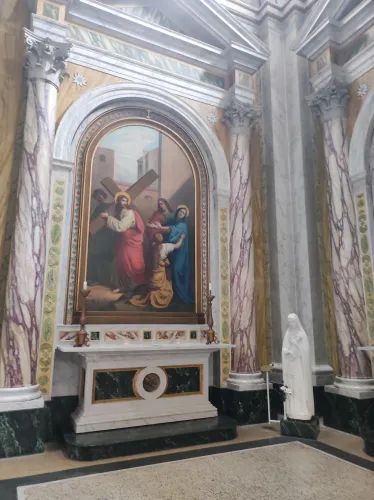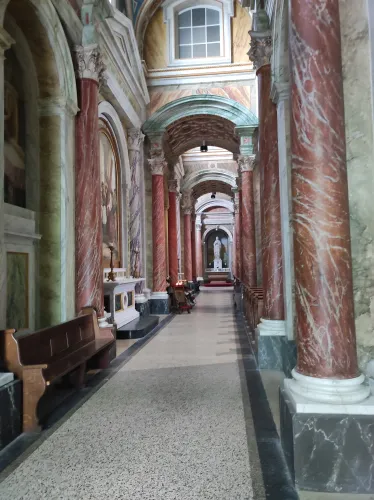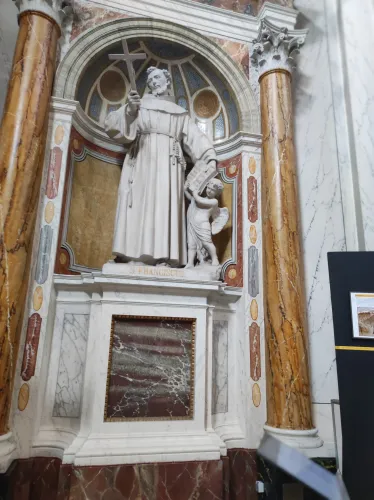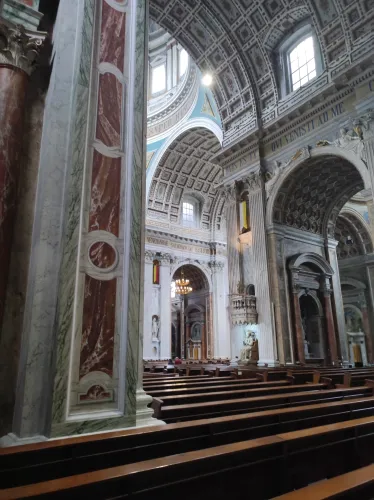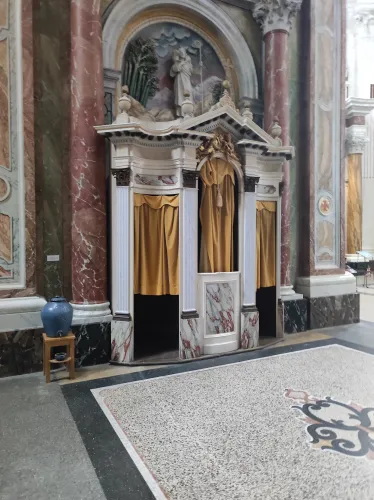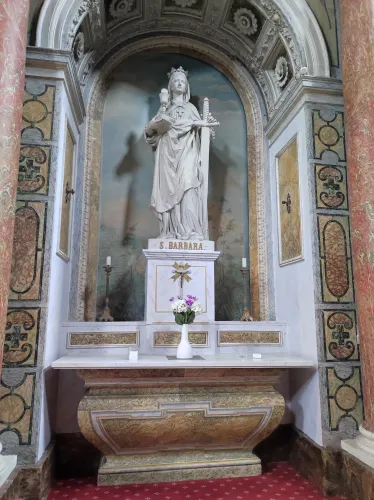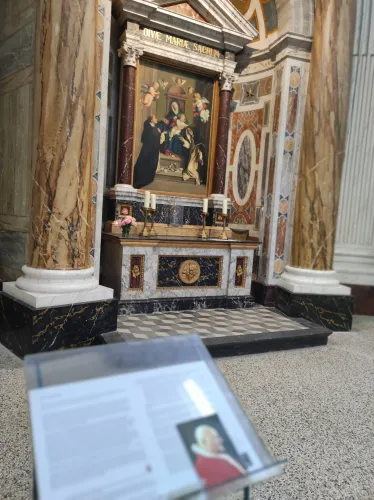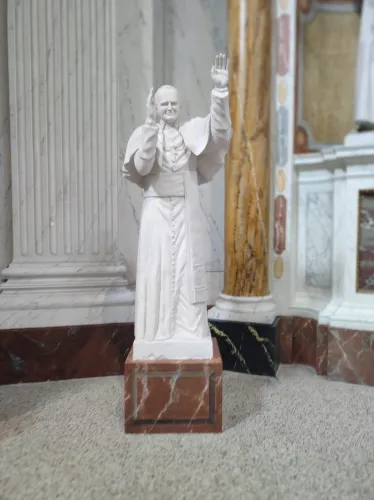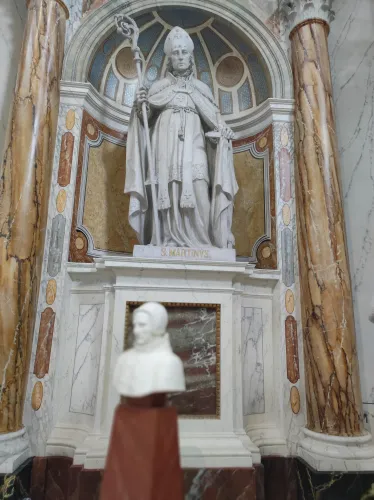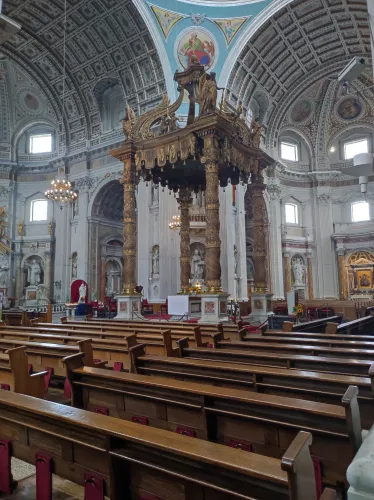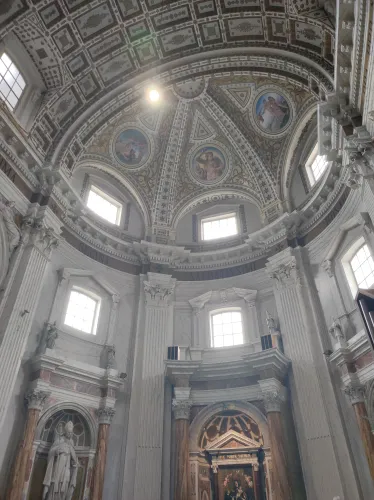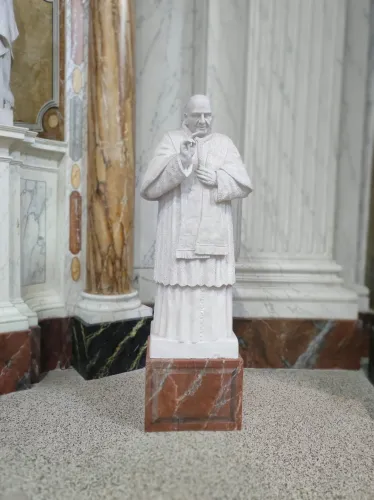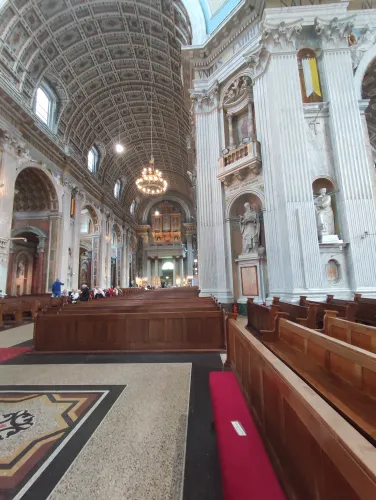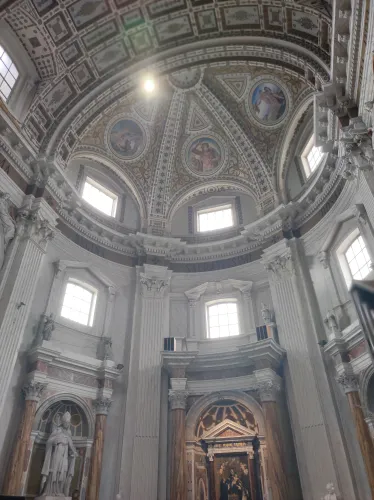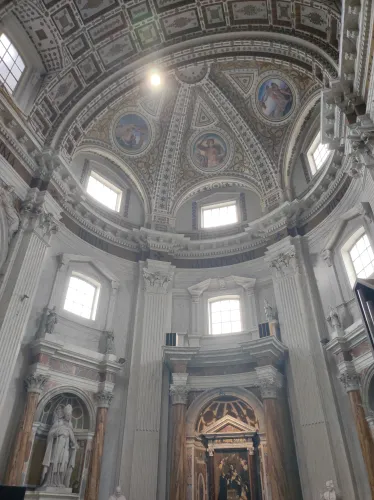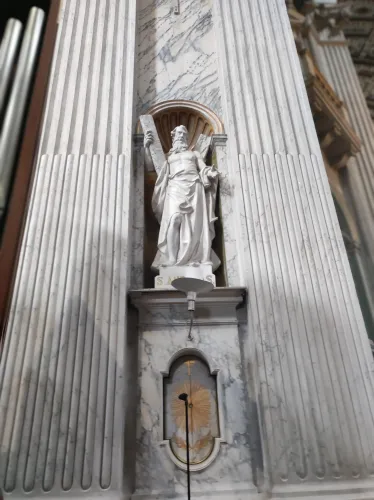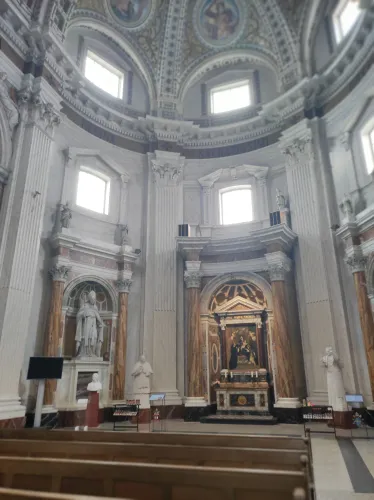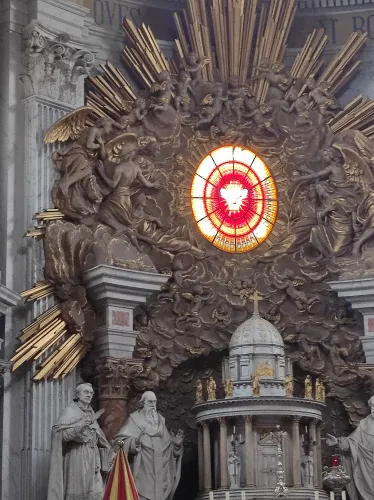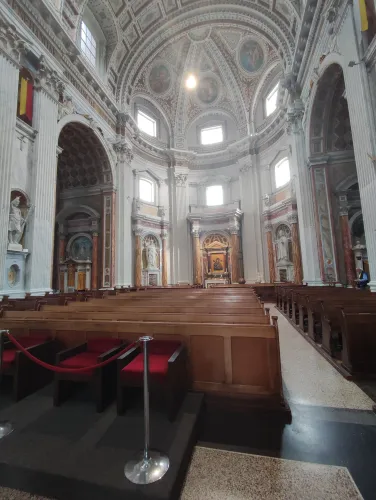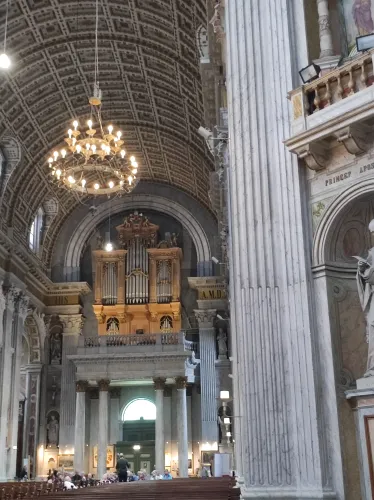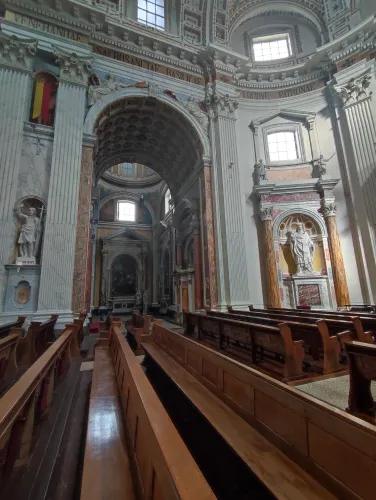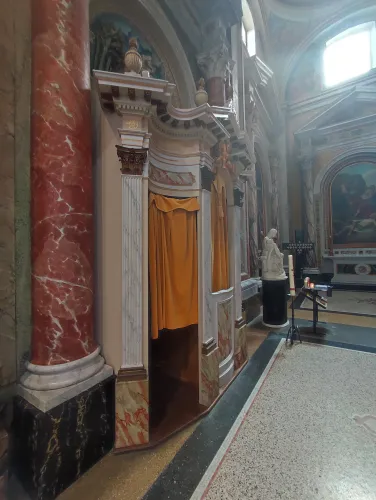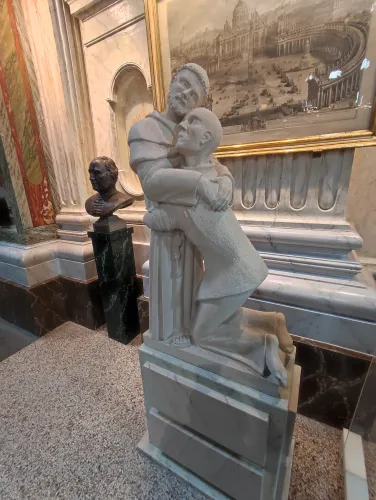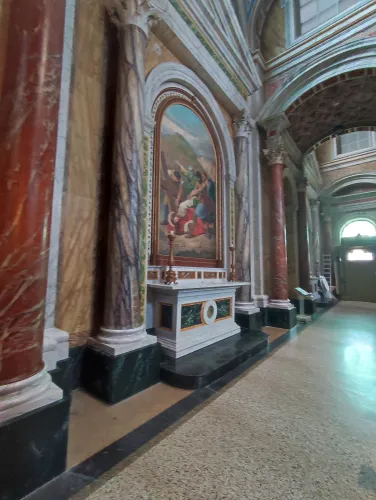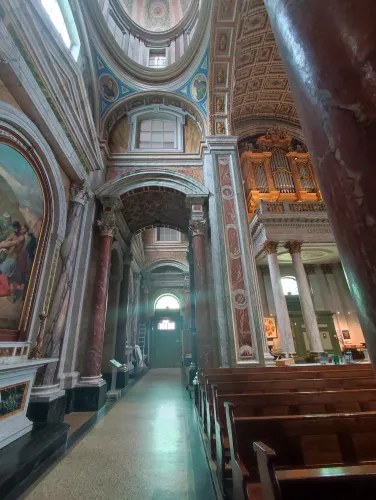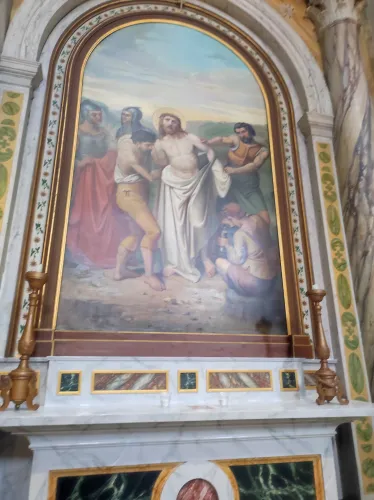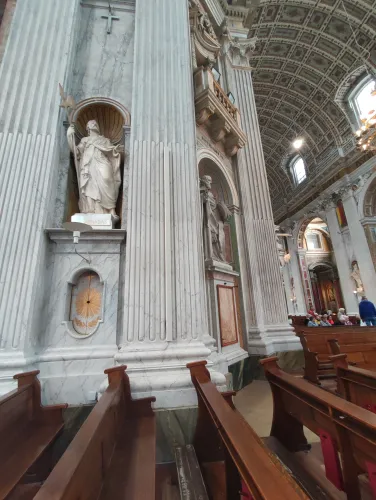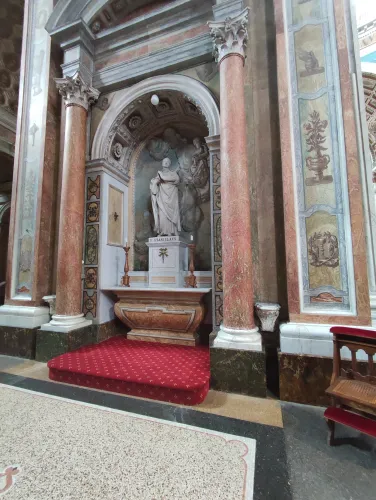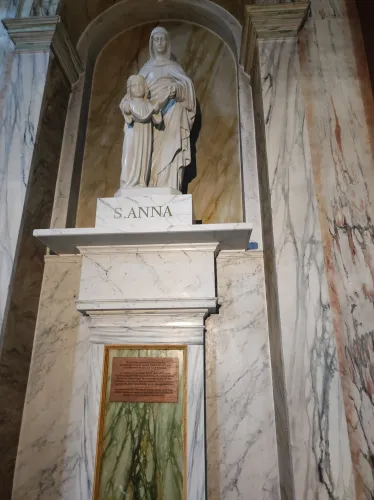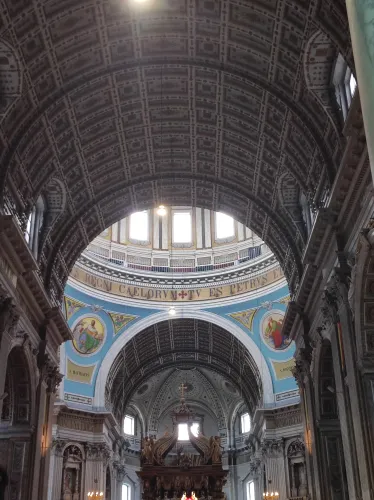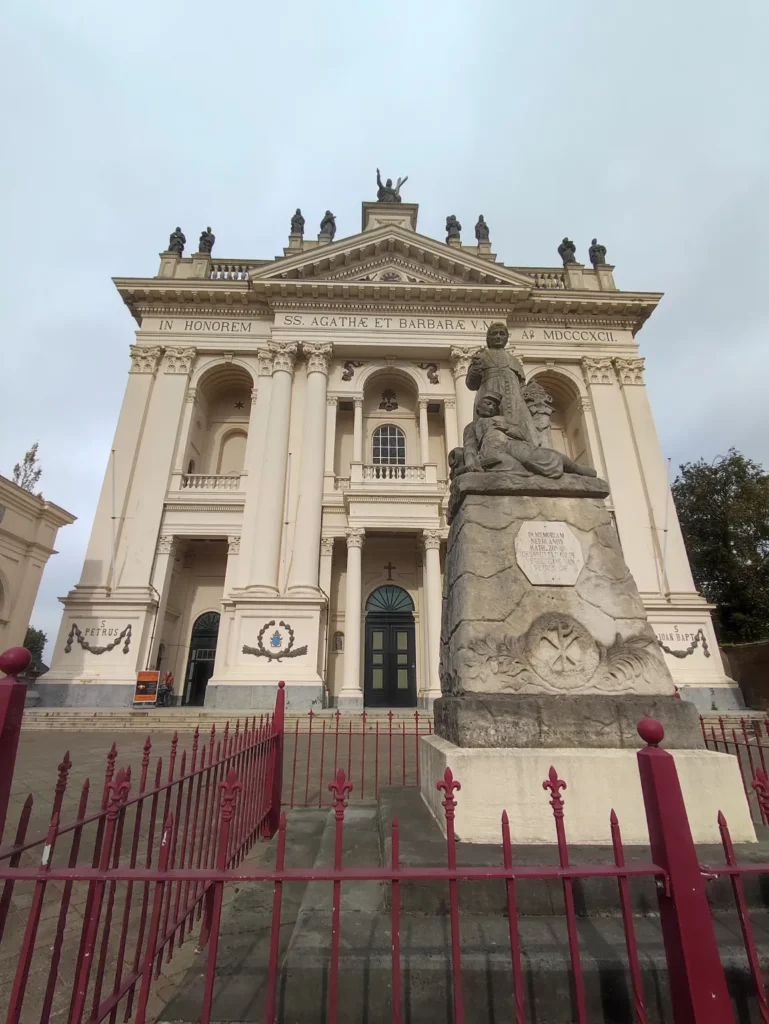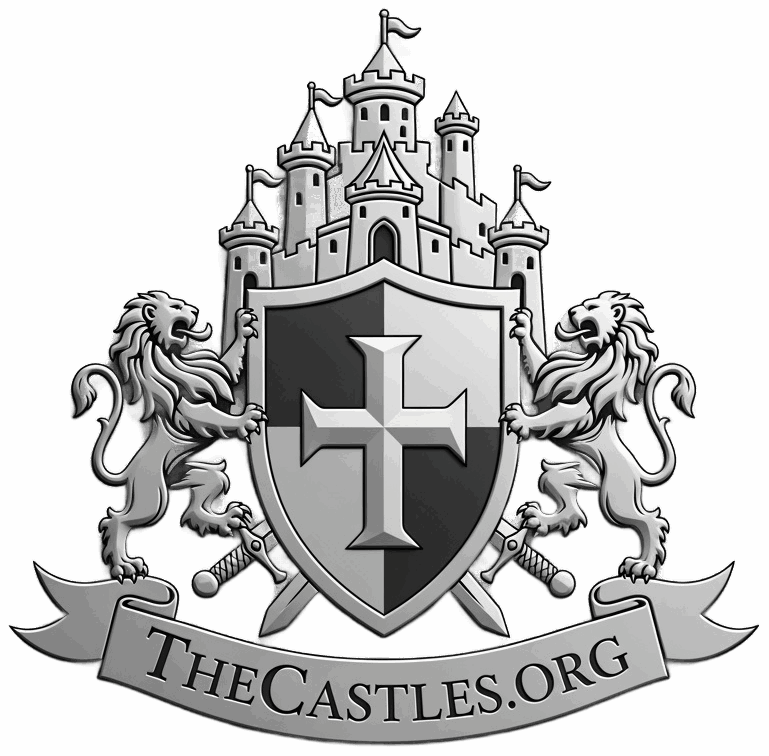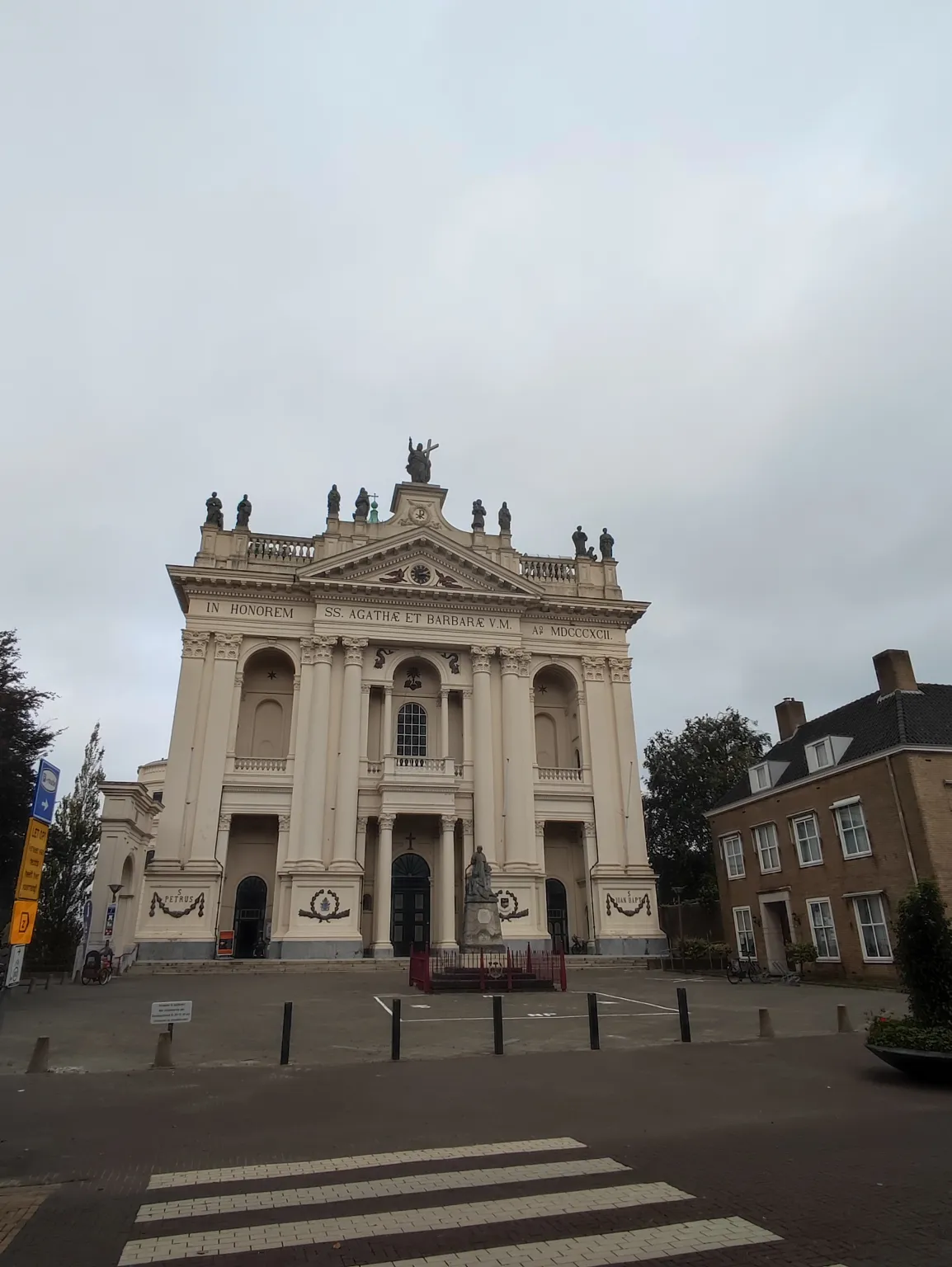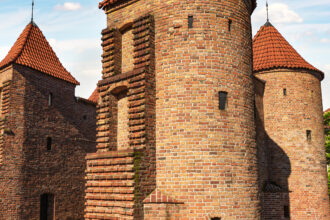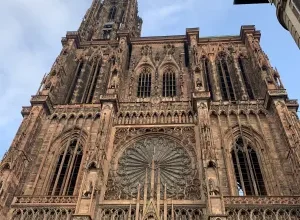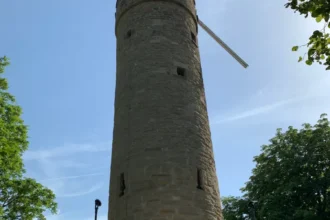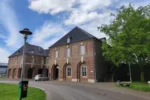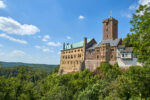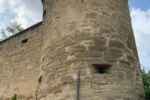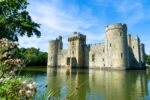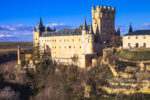In the small town of Oudenbosch in the west of the Dutch province of North Brabant stands the Basilica of St. Agatha and St. Barbara, which is actually a replica of the world-famous St. Peter’s Basilica in Rome. The exterior of the building is 81 meters long, 55 meters wide, and the highest point of the imposing dome measures 63 meters. This means that the proportions of the basilica are exactly the same as those of St. Peter’s Basilica in Rome, but on a scale 16 times smaller. This was an impressive achievement for the town of Oudenbosch, which had a population of 3,500 at the time, when construction of the basilica began in 1865. The reason for building the church was that the old St. Agatha Church, which had been built in 1513, was not only in poor condition but had also become too small for the growing number of worshippers. The initiator was Willem Hellemons. After his return from Rome on October 3, 1834, he was sent by his superior at St. Bernardus Abbey in Bornem to serve as a deacon in the parish of Oudenbosch. On December 9, 1836, he became the first chaplain and, after five years, on March 5, 1842, he was appointed pastor of the parish of Oudenbosch. In three sermons, he convinced the congregation of his construction project, which was designed by the famous architect Dr. Petrus Josephus Hubertus Cuypers. Cuypers had already gained fame through the construction of the Central Station and the Rijksmuseum in Amsterdam. The groundbreaking ceremony took place on October 18, 1865, after the first bishop of Breda, Monsignor J. van Hooydonk, had approved the construction plans. The nave was completed in 1880. On September 14, 1880, the church was solemnly consecrated by the third bishop of Breda, Monsignor H. van Beek. Twelve years later, in 1892, the façade was completed under the direction of Prof. G. J. van Swaay, a student of the architect Cuypers, based on the model of the Lateran Basilica. The façade is divided into three floors, crowned by a 4-meter-high figure of Christ as “Salvator mundi,” the Savior of the World, by the artist F. de Vriend. This is a copy of the statue of Christ from the Lateran Basilica. The rich decoration of the basilica took much longer. Kiske Raaijmakers was responsible for this and was still busy decorating and painting in the 1930s. On November 26, 1911, the Zouave monument was unveiled on the church square in front of the basilica. It shows Pope Pius IX blessing a dying Zouave at his feet. The monument commemorates the 3,000 Dutch soldiers, known as Zouaves, who marched via Oudenbosch to Rome between 1864 and 1870 to fight for the preservation of the Papal States. Due to the beauty of the church, it was elevated to the rank of “Basilica minor” on July 11, 1912, which celebrated its 50th anniversary on September 17, 1930. On April 1, 1954, the foundation for the preservation of the basilica was established, which has been restored and renovated repeatedly over the years. The Basilica of Oudenbosch, which is open seven days a week and can be visited free of charge, is a real tourist magnet, which even Her Majesty Beatrix, the former Queen of the Netherlands, visited on June 19. In addition to the life-size figures of the apostles in the niches on the pillars and the Ludwig König organ, a particular highlight is the imposing dome, which has a diameter of 20 meters and an internal height of 51 meters, which can be admired up close after climbing 140 steps via a spiral staircase. It is considered one of the greatest architectural masterpieces in the Netherlands. I, too, was fascinated by the Basilica of St. Agatha and St. Barbara, which is a magnificent replica of St. Peter’s Basilica in Rome and made me completely forget that I was actually in the Netherlands.
